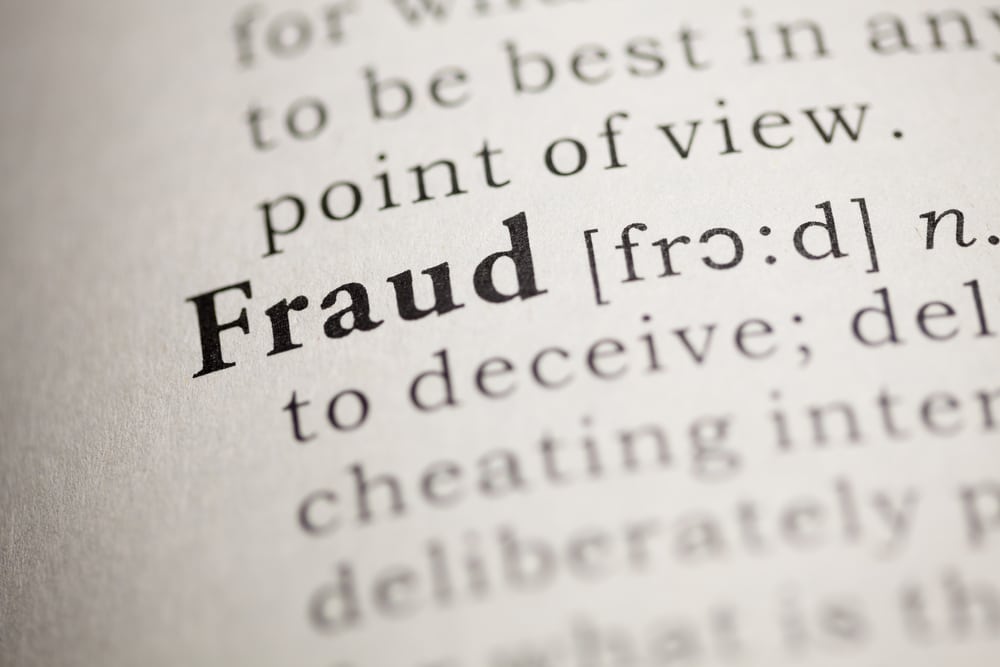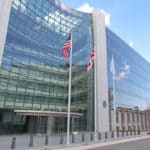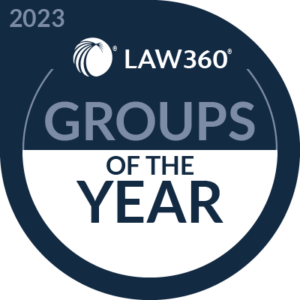FAQ’s:
What is Securities Fraud?
Securities fraud comes in a variety of forms but is typically a white-collar crime that most often involves providing false information to investors in order to affect their investment choices. Some acts of securities fraud are committed to manipulate the financial markets.
Types of Securities Fraud
- Breach of Fiduciary Duty – When a company or individual violates its duty of trust to investors.
- Omissions of Material Facts – When a company fails to accurately disclose its financial information to shareholders.
- Unauthorized Trading – When a broker makes trades without permission from his or her client.
- Ponzi Schemes – When early investors are paid with sums obtained from later ones in order to create the illusion of profitability.
- Churning – When brokers make excessive trades to generate commissions.
- Pyramid Schemes – When participants recruit others to invest money with the promise of a high return in a short period of time, with returns being primarily derived from new recruits rather than business activities.
- Advanced Fee Schemes – When an individual or company requires investors to pay a sum of money in advance of a transaction.
- Foreign Currency Fraud – When an individual or company defrauds traders by convincing them that they can expect to gain a high profit by trading in the foreign exchange market.
- Broker Embezzlement – When a broker or company takes assets from clients and then uses them for unauthorized purposes.
- Hedge Fund-Related Fraud – When a lack of oversight creates potential for fraudulent investments to occur.
- High Yield Investment Fraud – When investors are guaranteed a promise of high return with little or no investment.
- Manipulating Stock Prices – When individuals or companies spread false information, usually on the Internet, to inflate the worth of a publicly-traded company.
- Lying on Securities and Exchange Commission Filing Forms – When companies falsify or omit financial information on required forms.
- Committing Accounting Fraud – When a public accounting firm falsely reports financial information on behalf of its client.
- Late-Day Trading – When trading occurs after the market price is already calculated.
According to the Federal Bureau of Investigation, securities fraud can be linked to high-pressure investment tactics or unsolicited offers and investors should be aware if they believe either of these is occurring.
Securities Fraud Laws
History
Beginning in 1911, investors were protected from securities fraud by state governments through blue-sky laws, enacted to regulate the offering and sale of securities. However, the blue-sky laws were often disregarded since there was no consistent federal standard. As a result, federal laws were passed, and the regulation of the securities industry continues to evolve today.
Important Securities Fraud Laws
- The Securities Act of 1933
- Also known as the “Truth in Securities Act” or “Federal Securities Act,” this law was passed to increase public trust in capital markets. It requires that investors receive financial and other information concerning securities that are offered for public sale. In addition, the law prohibits the misrepresentation or deceit of investors regarding the sale of securities.
- The Securities and Exchange Act of 1934
- This law was passed to regulate the trading of securities between individuals and companies without involving the original security issuers. This Act also created the Securities and Exchange Commission (SEC) to enforce federal securities laws and regulate the securities industry.
- The Trust Indenture Act of 1939
- This Act pertains to the public sale of bonds, debentures, and notes, and requires that a formal agreement must exist between the issuer of the bonds and the bondholder prior to any sale.
- The Investment Company Act of 1940
- Under this law, investment companies and mutual funds must make regular public disclosures regarding their financial status and investment plans.
- The Investment Advisers Act of 1940
- This Act governs investment companies and individuals who are paid to advise investors on the purchase of securities. As a result of amendments in 1996 and 2010, this law only applies to advisers with more than $100 million assets managed or if they advise a registered investment company.
- The Private Securities Litigation Reform Act (“PSLRA”) of 1995
- This law helped defendants in securities fraud cases by increasing the pleading requirements for successful litigation. PSLRA was created in order to reduce the number of frivolous lawsuits related to SEC Rule 10b-5 outlined in the Securities Exchange Act of 1934. Originally, the 1934 Act protected investors, but defendants wanted the United States Congress to raise the bar on requirements for Rule 10b-5 acceptance by the courts. PSLRA now requires that plaintiff’s lawyers have more facts suggesting deliberate fraud before they can proceed with a case.
- The Sarbanes-Oxley Act of 2002
- This Act, also referred to as SOX, was passed following several financial scandals that occurred in large companies, such as Enron, WorldCom, and Tyco International. SOX added requirements and penalties to the Securities and Exchange Act of 1934, including increased corporate responsibility, accounting regulations, criminal penalties, and further investor protections.
- The Credit Rating Agency Reform Act of 2006
- This Act also amended the Securities and Exchange Act of 1934, to provide for regulation of credit rating companies. Under this law, credit rating companies must register with the SEC, and additional oversight of these companies is designed to increase competition.
- The Dodd Frank Wall Street Reform and Consumer Protection Act of 2010
- This Act was passed following the financial crisis of 2008 and the goal was to protect consumers from fraudulent conduct in the financial services industry and increase accountability and transparency in that industry.
Penalties for Violation of Securities Fraud Laws
Securities fraud is primarily prosecuted through the federal government by the SEC. Although states also have their own securities laws and can prosecute cases, most securities fraud is prosecuted as a federal crime.
- Penalties Under Federal Law – A securities fraud violation is a Class C felony that is punishable by up to 20 years in prison and $5 million in fines. In addition, since investors likely lost money, a penalty would include repayment of funds lost as a result of securities fraud.
How Can I Prove a Securities Fraud Violation?
In order to establish a case of securities fraud there are generally six elements that must be proven by an investor.
- A Material Misrepresentation or Omission – The defendant must have made a material or important misrepresentation or omission of fact.
- Fraudulent Conduct – There must be fraudulent conduct in connection with the sale or purchase of a security.
- Intention – There must be an intent or wrongful state of mind when the misrepresentation or omission was made. It cannot be a simple mistake.
- Reliance – The investor must have relied upon the information or omission.
- Damages – There must be monetary damages incurred.
- Causal Connection – Investors need to show that the fraudulent actions caused them to purchase or sell securities.
Court decisions interpreting securities laws are instructive regarding the application of these elements to certain facts. As such, it is important to consult an experienced attorney who can assist you in determining whether you have a valid securities fraud case.
Who is Liable for Securities Fraud?
Securities fraud can be committed by a company such as a broker firm, investment bank or securities analyst firm, as well as individuals employed by these companies, including stockbrokers, accountants, or financial executives.
What is Accountant Fraud?
- Falsification of Financial Reports – This occurs when public accounting firms falsify or recklessly disregard false financial reports on behalf of their corporate clients. This creates an impression that the company is in a better financial condition than it really is.
- Stock Price is Affected – When the price of the company’s securities is affected by false financial reports this represents a form of securities fraud.
What is Insider Trading?
- Inside Information on Exchange of Stocks – This is the exchange of stocks or other securities by those with material, non-public information about a company. Insider trading often involves the knowledge of information in advance of it happening in order to gain an advantage in the purchase or sale of stocks.
- Breach of Fiduciary Responsibility – The definition has become more expansive in application and refers to any individual who knowingly trades securities based on non-public information. This conduct breaches the corporation’s duty of trust to its shareholders. The violation of trust to corporate shareholders is the key issue in determining whether illegal insider trading has occurred.
What is Internet Securities Fraud?
- Pump-and-Dump Schemes – “Pump-and-dump” schemes involve placing false and/or fraudulent information on the Internet with the purpose of influencing the price of securities. For example, this kind of scheme occurs when information is disseminated that positively influences the price of a stock and then the stock is dumped by investors responsible for the false and/or fraudulent information before the price falls to lower levels.
What is Microcap Securities Fraud?
- Microcap Companies – These companies have small assets, low stock prices, and trade in small quantities.
- Stocks Under $250 Million – Microcap stocks are stocks with a market capitalization of under $250 million that are generally traded on the OTC Bulletin Board and Pink Sheets Electronic Quotation Service.
- Penny Stocks – Many microcap stocks trade below $5 a share as penny stocks. These stocks are often the subject of microcap securities fraud.
- Chop Stocks – These are stocks that are purchased for pennies and then sold to unwary investors at dollars a share.
What are Disclosure Claims?
- Failure to Disclose Information to Investors – These are actions by investors against publicly traded corporations where corporate officials have failed to disclose the true state of the company’s financial and business affairs to its investors. This creates a misleading picture of the company that potentially harms investors.
- Price of Company Stock is Affected – In today’s exchange-based securities trading environment, information disseminated to the market by companies and their officials often has a dramatic impact on the price of that company’s stock. It is critical that information is complete, accurate, and timely because it has an impact on the price of a security, or the value of a person’s investment.
What Are Auction Rate Securities?
- Auction rate securities are variable-rate bonds or adjustable-rate preferred stocks that have interest rates that respond to financial market changes. The auction rate securities market was a sales format which held auctions to sell securities that were touted as “highly liquid” short-term investments to be purchased with excess cash but were much less secure than implied.
- The Auction Rate Securities lawsuits alleged that the banks knew, but failed to disclose, material facts about the auction rates market and the securities they sold to their investors. Specifically, the securities were not cash alternatives, like money market funds but were complex, long-term financial instruments with 30-year or longer maturity dates.
Contact Seeger Weiss LLP
Our firm has extensive experience representing victims of securities fraud. If you would like to speak to a professional regarding your rights, please fill out the free case evaluation form and an experienced member of Seeger Weiss LLP’s staff will contact you. Initial consultations are free of charge and do not create a legal relationship.
Other Complaint Options
If you want to make an investor complaint, you can do so directly with the SEC by completing a form that can be found at https://www.sec.gov/oiea/Complaint.html. This does not preclude you from consulting an attorney and filing a lawsuit.



















